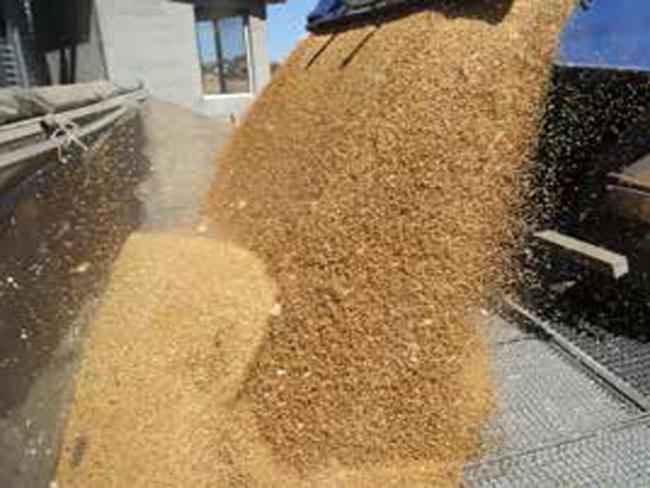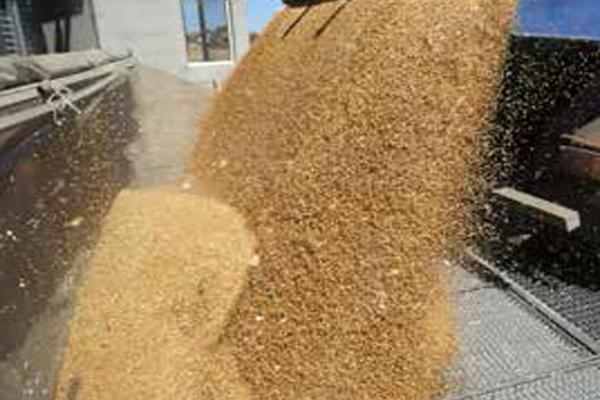Mycotoxins in cereals: control strategies and integration for energy use

This project aims to develop strategies to prevent and control the risk of mycotoxins on cereals from the phase of field and storage, up to the possibility of using for energy use, in full respect of the rules, those productions, with mycotoxin content exceeding the limits imposed or recommended by applicable regulations.
Integration of the cereal supply chain and biogas chain: mycotoxins and compliant products for biodigesters.
The introduction of contaminated maize into biodigesters did not significantly reduce the yield in biogas and biomethane compared to the witness testimony and the concentration of AFB1 measured in the extracted digestate was lower than expected. The definition of the product and qualitative characteristics of the product (maize destined for biodigesters) was determined by sampling carried out at the time of the conferring of the still green grain coming from early, medium and late hybrids.
A study was conducted on the formal path to be applied to lots of cereal grains for "energy use"; the legislation on digestate at national and regional level was also analyzed and summarized.
In light of the positive and reassuring results of the present experimentation, the Italian Biogas Consortium confirms the interest of the biogas plants in the use of maize contaminated by aflatoxins, provided that the price is interesting and the regulatory / authorization indications be clear both at the level of the Padanian and national Regions.
Use of bio-competitors (BCA) to reduce the risk of contamination by aflatoxins on maize.
Validation of a forecasting model multi-toxin for the prediction of aflatoxin and fumonisin contamination during cultivation and harvesting. Rapid analytical methods based on biosensors (electronic nose). Procedures adopted during the storage for the introduction of category "product to energy use" for contaminated grains over the permitted limits for feed and food use
Development and demonstration of innovative biological products to reduce the risk of contamination by aflatoxins on maize.
Use of bio-competitors on maize to limit the infection of aflatoxigenic fungi.
On the basis of the demonstration tests included in this project and the results obtained in the use of open field for product registration, it can be concluded that, in perspective, AF-X1 (product being registered) is an essential tool to have a guarantee of health of the national maize, at least with regard to the most dangerous and most binding contamination, namely the aflatoxin contamination.
Better definition of a multi-toxin model (aflatoxin and fumonisin) useful to assess the risk of contamination during delivery and storage.
Development and validation of a multi-toxin model.
The co-presence of several toxigenic fungi has a crucial effect on the production of mycotoxins, as well as on the growth of the fungi themselves. The results of the multitoxin model are still not entirely satisfactory, especially with regard to aflatoxins. The creation of a joint TOX-maize model, required a considerable effort to interpret the interactions that obviously needed further updates. Having in any case acquired all the necessary raw data, we believe we can reach a more satisfactory result in a reasonably short time
Development of analytical tools to manage quickly and effectively contaminated grains at the entrance of storage .
Final outcomes: Use of rapid analytical methods based on the electronic nose.
The semi-quantitative analytical method is promising, certainly for samples with high mycotoxin contamination. Through the statistical methods used, electronic nose sensors have been identified that can provide a discriminating response, particularly for maize.
However, there remains a criticality relative to the time required for the conditioning of the sample in the pre-analysis phase, inside the balloon, currently set at one hour, not compatible with the use to receive material in the collection centers.
Definition of agreement to the use of contaminated grains in energy target, between producers and users to ensure the matching of supply and demand, favoring an adequatereturn on products for producers and users and guarantee the necessary traceability
Final outcomes: Influence of irrigation technique on sensitivity to mycotoxins in maize.
Following this experimentation, it was not possible to obtain significant data on the influence of one irrigation technique rather than the other and on the volumes of water return. It is important to underline the fundamental criticality of the duration of the research, which proved too short or at least not long enough. Nevertheless, due to the reduction of aflatoxin contamination, the influence of irrigation was confirmed, in order not to place the plants in conditions of vegetative stress; even in a vintage like 2018, with a fairly well distributed rainfall during the cultivation period, statistically significant differences were found between the non-irrigated and the irrigated thesis.
| Titolo/Descrizione | Url | Tipologia |
|---|---|---|
|
La ricerca: PSR 2014- 2020
|
Link ad altri siti che ospitano informazioni del progetto
|
|
|
sito web del progetto
|
Sito web
|
|
|
MICOntrollo
|
Link ad altri siti che ospitano informazioni del progetto
|
|
|
Progetti GOI (MICOntrollo)
|
Link ad altri siti che ospitano informazioni del progetto
|
|
|
Video project presentation
|
Materiali utili
|
|
|
Video project results
|
Materiali utili
|

